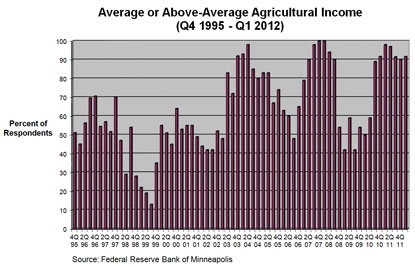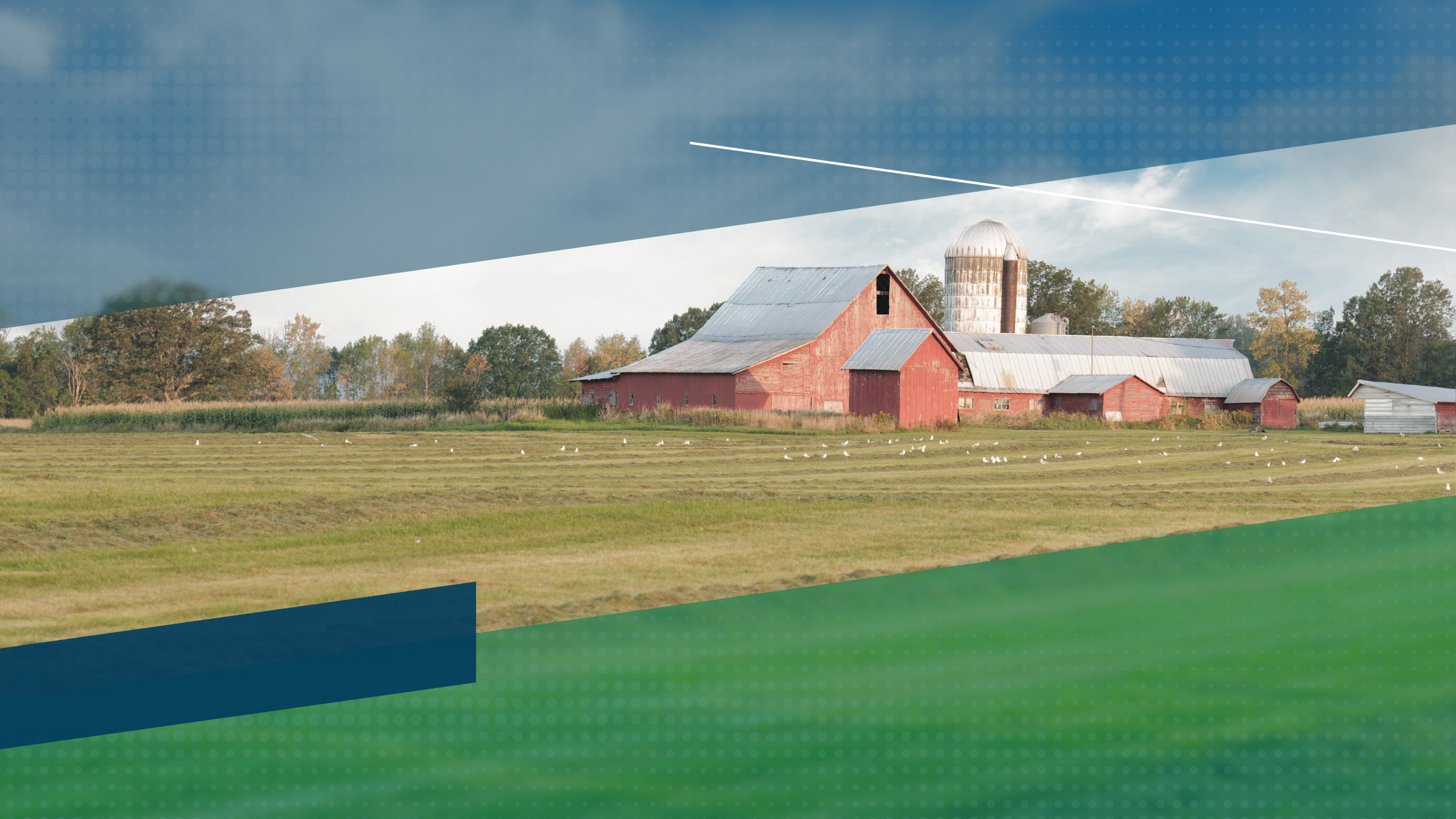Farm incomes continued to increase in the first three months of 2012, along with other financial measures, according to the Minneapolis Fed’s first-quarter (April) agricultural credit conditions survey. Land values increased further across district states, and interest rates on loans fell slightly from the last quarter. The outlook for the second quarter is also positive, with all states in the district expecting farm incomes and household spending to increase or stay the same. In addition, all states expect increases in farm capital spending.
Farm income, household spending and capital investment
Just over half of district lenders reported that farm incomes increased in the first quarter of 2012, and 39 percent said that incomes saw no change. Wisconsin experienced the most widespread increase in income in the district, with 67 percent of respondents reporting higher farm income. Household and capital spending within the district also increased, with 97 percent of lenders reporting increases in or steady levels of household spending and 94 percent reporting unchanged or higher capital spending. The reported results were generally consistent throughout the Ninth District, showing steady growth.
Loan repayments and renewals
Agricultural producers in the district are maintaining their rate of loan repayments, and renewals are similarly holding steady. Loan repayments were unchanged for 55 percent of respondents, while 44 percent reported higher repayment rates. A majority of lenders, 77 percent, stated that the number of renewals has held steady, and 19 percent reported a lower number of renewals.
Demand for loans, require collateral and interest rates
Farm households remain flush with cash, and correspondingly their demand for loans fell slightly from the last survey. Almost 45 percent of lenders experienced no change in loan demand, and 37 percent indicated that loan demand has decreased. The amount of required collateral remained flat, with 94 percent of respondents reporting no change. Both fixed and variable interest rates on operating, machinery and real estate loans all decreased somewhat since the past quarter.
Cash rents and land values
The average cash rents and land values for nonirrigated and irrigated cropland as well as ranchland in the district all showed increases from the past year, according to survey respondents. The largest increases were seen for nonirrigated farmland, which increased in value by 26 percent, while cash rents for it rose by 20 percent. Ranchland increased by almost 17 percent in value and also saw an 18 percent increase in cash rents. While both factors increased on average throughout the district, Montana experienced a decrease of 18 percent in cash rents for ranchland. South Dakota had the greatest gains in nonirrigated land value, with an increase of 38 percent, as well as in nonirrigated cash rents, which increased 29 percent.
Outlook
Expectations for the second quarter of 2012 are generally positive, as a lender from Minnesota reported, “Looks like [the] farm economy will continue to be good for another year.” Almost 80 percent of lenders predicted that farm income will either increase or remain steady, and the majority of respondents expected no change in household and capital spending (62 percent and 51 percent, respectively). Loan demand, loan renewals and the amount of required collateral were also largely expected to remain unchanged in the upcoming quarter.
Appendices:






